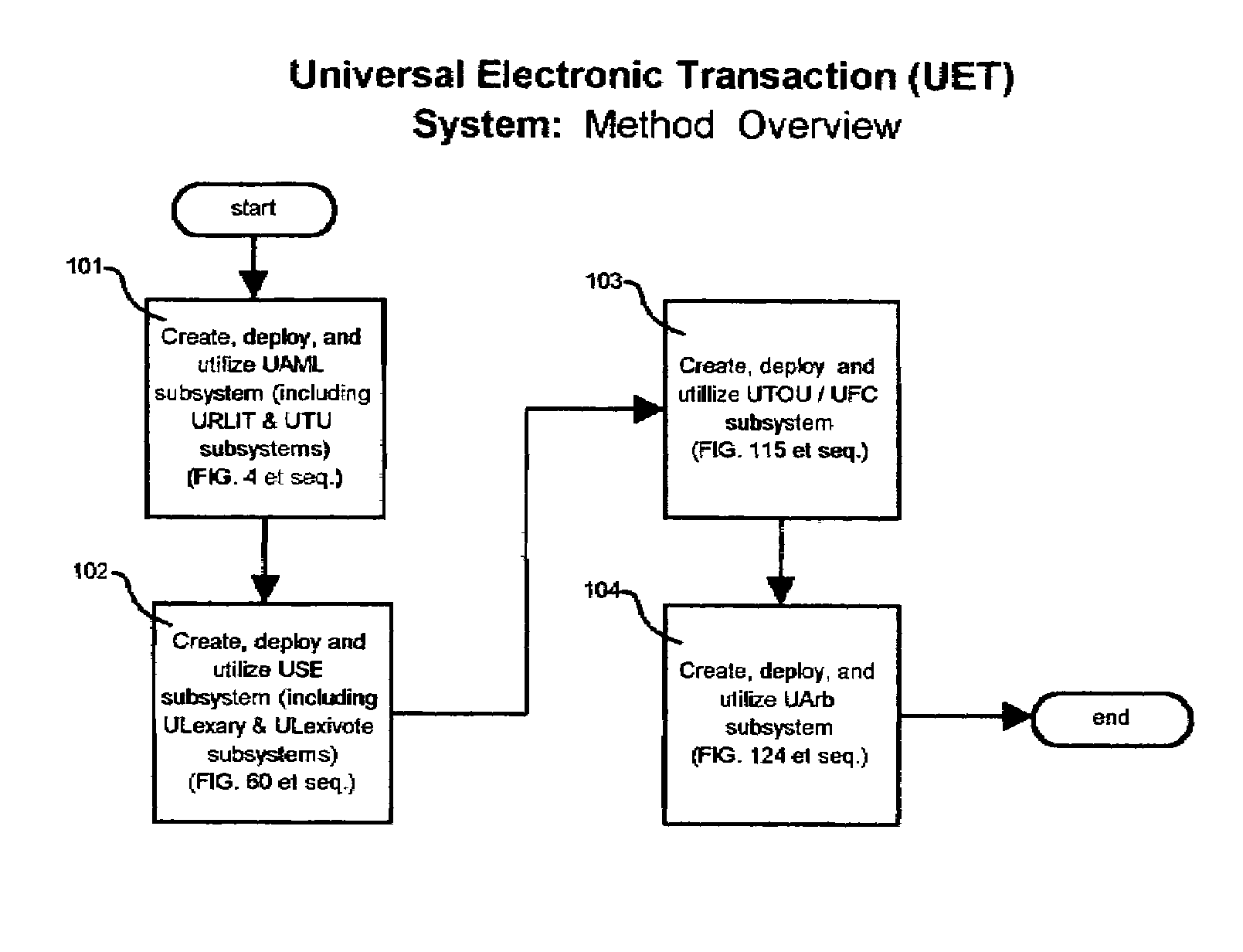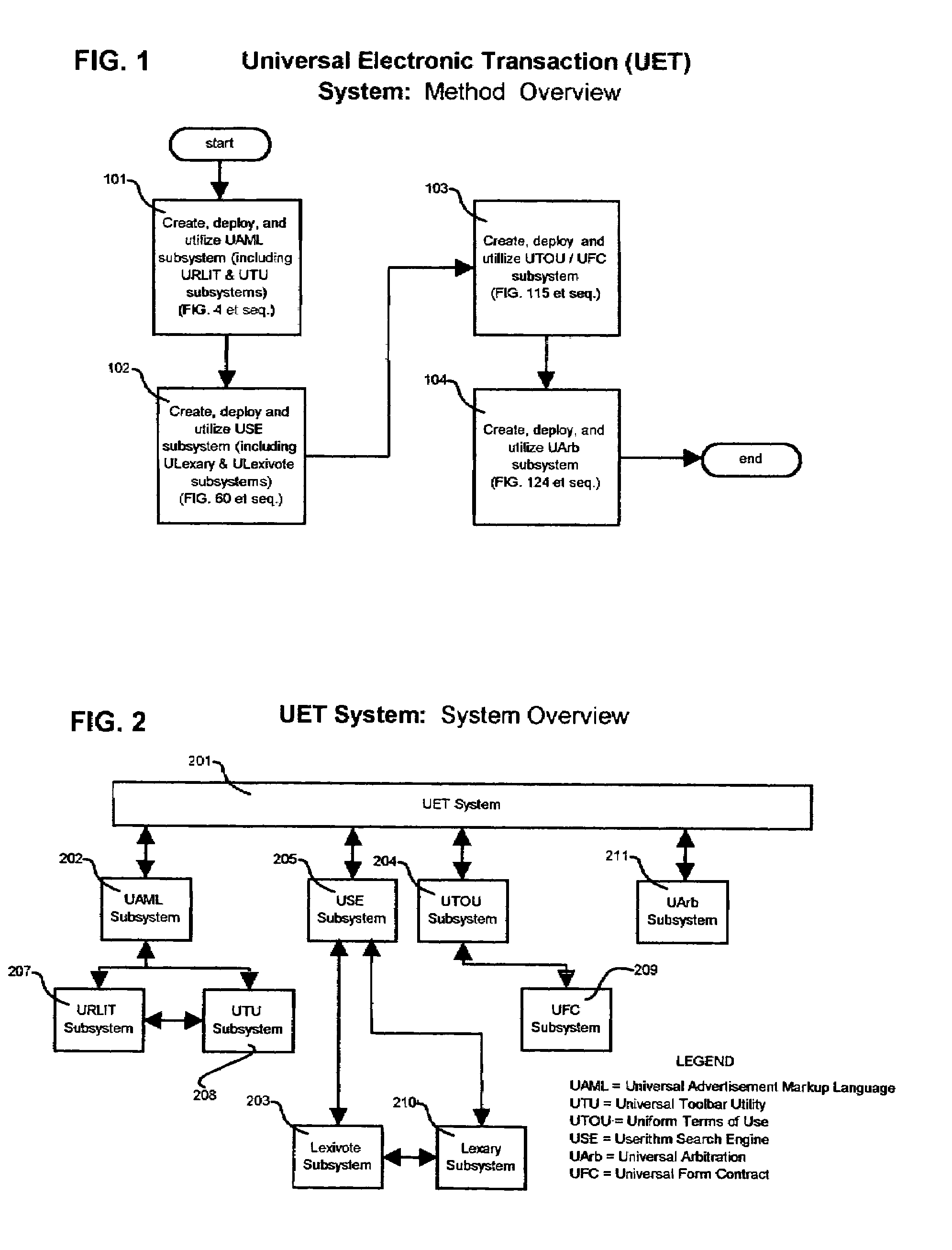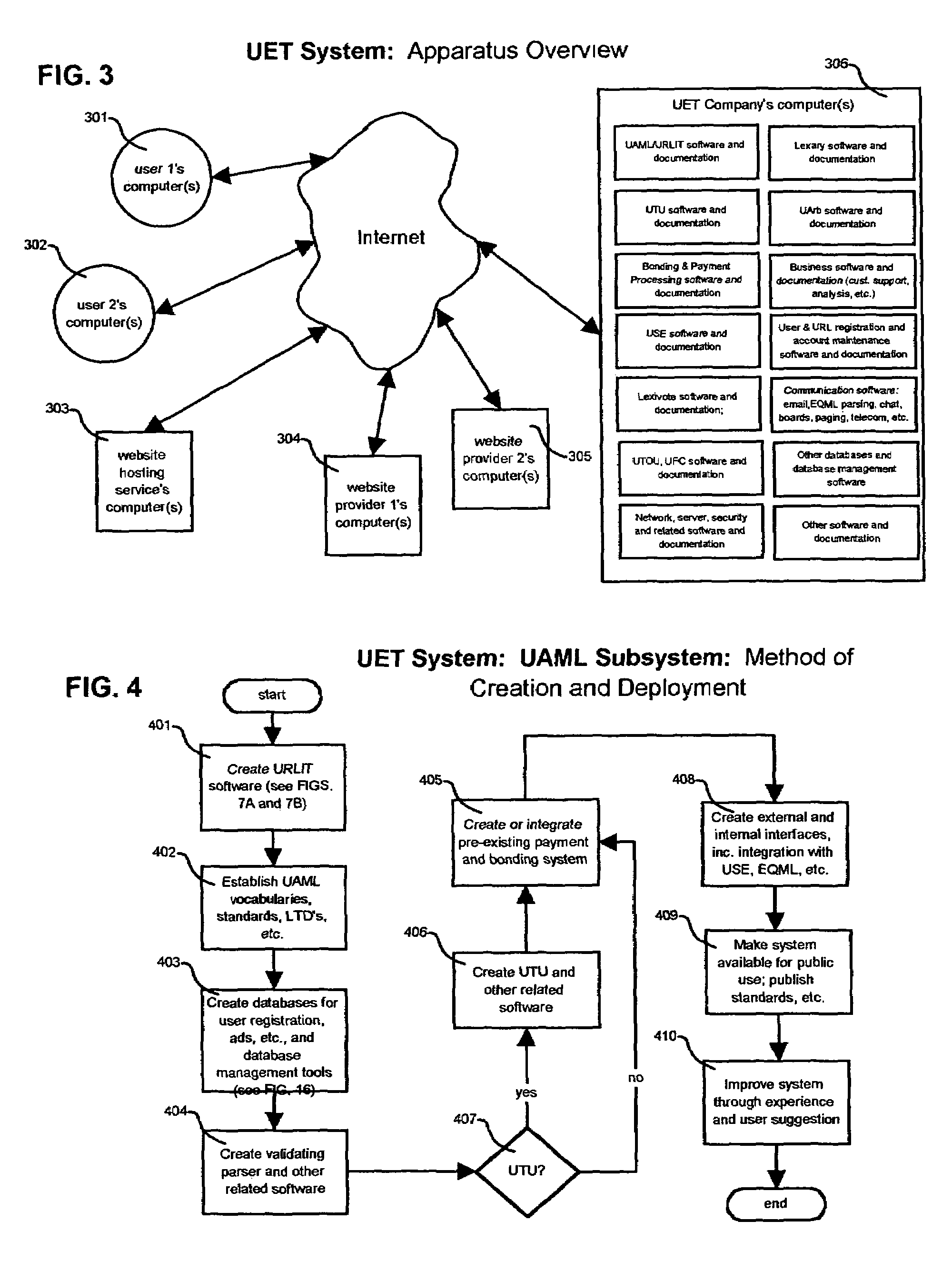While effective technology for each of the aforementioned services exists, its usefulness is severely limited by a number of technical factors as follows.
This approach is not ideal in that such “
deep Web” data cannot be readily indexed and catalogued by external
search engine providers; thus, searching
Internet auctions for a particular item requires that a user visit each individual auction site and search through that given website's
search interface or have an intermediary do so.
Moreover, auction site providers typically frown upon attempts to index, analyze, or otherwise make use of information in the auctioneer's databases for purposes other than bidding, and these website providers may use their control of the information therein to prevent competition by other companies.
Thus, obtaining accurate and complete market data pertaining to
Internet auctions is more difficult than it would be in a transparent marketplace.
This alternative is not ideal in that it involves a great deal of time and expense and offers a low chance of success: to launch a new Internet auction site, one must purchase (or write), install, run and maintain expensive auction site
software on expensive
computer hardware, incur all the other risks and expenses associated with starting a business, and then come up with a way to draw bidders and sellers away from the existing major companies' sites.
These systems are not ideal in that such a one-size-fits-all service is unlikely to yield results that are better than—or even equal to—those that could be obtained through the use of individual algorithms that have been uniquely tailored to meet the individual needs of a particular person with a particular search inquiry at a particular point in time.
Thus, most of the limitations described above in reference to
Internet auctions apply to these classified ad systems as well: indexing by third parties is difficult and may cause legal battles with website providers who believe that user-provided content is their property; compilation and analysis of such data is difficult.
This approach is not ideal in that careful reading of each individual website's terms of use agreement is prohibitively time-consuming for a user of multiple websites, and the duplicative legal work associated with the creation of each individual terms of use agreement is wasteful.
Meanwhile, resolution of disputes arising under seemingly infinite varieties of terms of use agreements leads to unpredictability in the case law.
Unfortunately,
the Internet, replete with millions of separately owned and operated private websites, has no such uniformity.
Moreover, numerous contracts that are paper-based under the related art are extremely duplicative as well.
Many common agreements, such as purchase or rental agreements, contain large numbers of very similar terms which vary slightly from one agreement to another, which situation again requires excessive legal review by the parties themselves as well as third parties such as
consumer advocacy groups and the courts, and again thwarts
predictability in the law.
Meanwhile, millions of pieces of paper and millions of dollars are unnecessarily spent each year in the creation,
documentation, and storage of these terms in contract form.
Even in situations where the law is well-settled, however, dispute resolution through the courts typically takes anywhere from several months to several years, as backlogs continue to grow.
These alternative dispute resolution methods, however, are still only employed in a fraction of cases, since arrangement for such proceedings is done on a case-by-case or contract-by-contract basis.
Moreover, many unsophisticated parties have little or no knowledge of the benefits and availability of alternative dispute resolution methods.
This approach is not ideal in that, since each website is designed completely differently from the next, a Web visitor must learn to navigate through the peculiar
layout of each individual website in order to find the given site's
order form or contact submission form.
Moreover, the Web
order form concept itself is less than ideal in that, every time a user begins
purchasing from a vendor through its website, the user must register with this vendor, providing
credit card information, e-mail account address, and other sensitive data.
Each time this data is circulated to a new party, the user's
exposure to the risk of
identity theft, fraud, and spam increases.
Thus,
World Wide Web search engines, relying upon highly uncertain approximations, oftentimes return results that are highly variable in terms of relevancy.
This method is not ideal in that it provides no means whatsoever for capturing the difference between a “positive” reference and a “negative” reference.
In order to speed up the pace at which such reference materials are updated, some attempts have been made to create limited-function, on-line dictionaries—such as dictionaries for computer terms—that allow user-submission of definitions, but these attempts are not ideal in that these dictionaries must still be edited by someone so that false or frivolous submissions do not get published.
Such attempts, in the absence of a superior approach, would be even more futile in the more subtle areas of language, such as grammar and style.
While the apparent democracy of such an approach seems attractive at first blush, the actual performance of such an approach is disappointing: a novice in a field can delete the work of an imminent scholar in the same field and replace this work with nonsense.
Meanwhile, someone trying to use the Wikipedia as a reference tool does so at his or her own risk, since the content thereof may or may not be accurate at and any given time and changes from
day to day.
This approach to the
toolbar is not ideal in that the
toolbar essentially exists to generate ad revenue for the
toolbar maker at the expense of website providers themselves.
 Login to View More
Login to View More  Login to View More
Login to View More 


